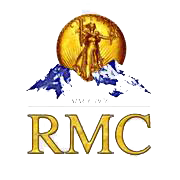Have you ever noticed small capital letters on coins and wondered what they mean? They are called mint marks, and in this article we will walk through the different types.
What do mint marks mean?
In 1835, the United States established its first branch mints. The coins produced from each branch needed to be easily distinguished from one another so that the production of coinage could be standardized across all of the branches. Thus, mint marks are used to identify the U.S. Mint branch at which a particular coin was stamped.
Here is a list of the different mint marks on U.S. coins:
“C” Mint mark
Charlotte, North Carolina
This mark was placed on coins minted at the Charlotte Mint from 1838-1861. Established exclusively for the coinage of gold, it was located near Reed Gold Mine, the first gold mine in the United States. When North Carolina seceded from the Union at the start of the U.S. Civil War in 1861, the Confederates took control of the Charlotte Mint. After the war, requests to reopen the mint were denied by Congress.
“CC” Mint mark
Carson City, Nevada
This mark was placed on some gold and silver coins minted at the Carson City Mint from 1870-1893. Built at the peak of the Nevada silver boom to facilitate the minting of silver coins from silver mined in the Comstock Lode, it closed in 1893 and now serves as the Nevada State Museum.
“D” Mint mark
Dahlonega, Georgia
This mark was placed on gold coins minted at the Dahlonega Mint from 1838-1861. Built during the Georgia Gold Rush to help miners get their gold minted without having to travel to the Philadelphia Mint, the Dahlonega Mint was seized by the Confederate army when the U.S. Civil War began in 1861. After the war, the U.S. government decided not to reopen it.
“D” Mint mark
Denver, Colorado
This mark has been placed on coins minted at the Denver Mint since 1906. Established in 1862 as a branch mint, it accepted deposits of raw gold from miners in the area and produced gold bars from them. Today it is one of the four remaining coin-producing U.S. Mint branches.
“O” Mint mark
New Orleans, Louisiana
This mark was placed on gold and silver coins minted at the New Orleans Mint from 1838-1861 and 1879-1909. Built due to the city’s strategic location along the Mississippi river (an important center of commercial activity), the mint was seized by the Confederacy in 1861 at the start of the U.S. Civil War. Following the war, the mint was reopened and produced silver coins until its closure in 1911.
“P” Mint mark
Philadelphia, Pennsylvania
Though it has been officially striking coins since 1793, this mark was not placed on coins minted at the Philadelphia Mint until 1942, when it was stamped on Jefferson wartime nickels. It was not until 1980 that the Philadelphia mint mark was placed on all coins in denominations greater than one cent. This mint is one of the four remaining coin-producing U.S. Mint branches.
“S” Mint mark
San Francisco, California
This mint mark has been placed on coins minted at the San Francisco Mint since 1854. Established to serve the needs of miners during the California Gold Rush, the mint has in present-day been used primarily for proof coinage.
“W” Mint mark
West Point, New York
This mint mark has been placed on coins minted at the West Point Mint since it began official operations in 1988. The first appearance of this mint mark, however, occurred in 1983 with the production of a commemorative coin for 1984 Los Angeles Olympic Games. Today, the mint produces all American Eagle and Buffalo series proof and bullion coins, as well as many gold and silver commemorative coins.
Finding the mint mark
Often, mint marks are difficult to locate—after all, they’re designed to be inconspicuous. In fact, some coins have no mint mark at all. Coins minted in 1965, 1966 and 1967 have no mint mark because the U.S. government decided to remove them temporarily as a means of discouraging coin collecting following a coin shortage in the early 1960s.
Since 1968, mint marks have been placed on the obverse (front) side of coins, often in the lower right quarter; prior to that, the marks were usually placed on the reverse of the coin.
